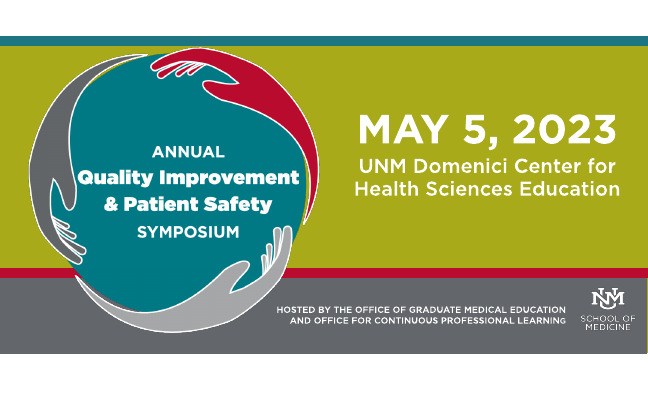Document Type
Poster
Publication Date
5-21-2021
Abstract
Introduction
Burnout (BO) is a syndrome characterized by depersonalization (detachment from patients), emotional exhaustion and loss of sense of achievement. [1] Wellness varies by individual, and is characterized by dynamic self-awareness and positive perception that results in healthy adaptive choices. A combination of mental, physical, emotional, intellectual and social states that allow engagement with work. [1] Many features of anesthesiology training and practice may make individuals prone to developing burnout [1,2,3]
Methods and Materials
A UNM anesthesia resident task force implemented a QI Project with the goal of improving departmental burnout using the PDSA (Plan Do Study Act) cycle model. Biannual Maslach Burnout Inventory (MBI) surveys were sent department wide. The initial survey was used to assess Burnout (BO) and Risk of Burnout (ROB) within our department. After the first survey, we presented our interim findings and data to the department in Grand Rounds, and publicized resources for those experiencing burnout. A second MBI with additional questions related to COVID19 was administered six months later. Between the second and third surveys, several departmental interventions developed organically, which we retrospectively observed. These interventions involved a new consistent early next day schedule release, resident/midlevel work equity, and improving resident social connectedness. Our final survey inquired about the effectiveness of these “interventions” and included a final MBI Survey.
Results
Survey #1: 61% participation (no sub-groups)
21% BO or ROB
- 6% high emotional exhaustion
- 48% high depersonalization
- 43% low on personal achievement index
Survey #2 COVID ERA: 41% participation
25% BO or ROB
No difference between sub-groups (Attending/Midlevel/Resident)
(CHART 1-2)
Survey #3 (post “interventions”)
- 30% BO or ROB within the department (55% participation)
- Resident 52% | Attending 27% | Midlevel 0%
(CHARTS 3-6)
Conclusion
- Burnout is not only detrimental to physicians but also a patient safety issue [3]
- A National Survey in 2020 revealed 41% of anesthesiologist’s are experiencing BO [4] and up to 57% Anesthesiology residents by CA-3 year [3]
- Overcoming BO in Anesthesiology is challenging due to the inherent attributes of practice and systemic barriers [1,2,3]
- 62% of resident’s surveyed reported prioritizing earlier next day schedule release markedly improved their sense of wellness.
- To a lesser extent, break equity and social connectedness had some positive effect on residents’ perception of wellness
- COVID19 & Loss of residents leading to increased work burden likely contributing factors
References
- Wong AV-K, Olusanya O. Burnout and resilience in anaesthesia and intensive care medicine. BJA Education. 2017;17(10):334-340.
- Answine JF, Lu AC, Levy TSM. Burnout, Wellness, and Resilience in Anesthesiology. International Anesthesiology Clinics. 2019;57(3):138-145.
- Pinyavat T, Mulaikal TA. Fostering physician well-being in anesthesiology. International Anesthesiology Clinics. 2020;Publish Ahead of Print. doi:10.1097/AIA.0000000000000300
- https://www.medscape.com/slideshow/2020-lifestyle-burnout-6012460
Recommended Citation
Fish, Adam; Austin Flores; and Robert Fisher. "Burnout in Anesthesia Residency: A Quality Improvement Project." (2021). https://digitalrepository.unm.edu/hsc_qips/51


Comments
Presented at the University of New Mexico GME/CPL 2021 Annual Quality Improvement and Patient Safety Symposium.